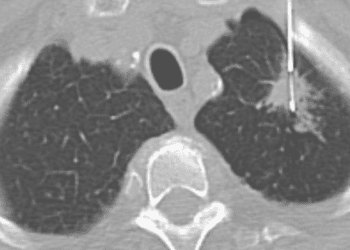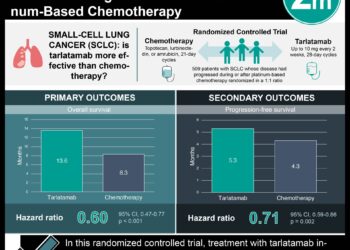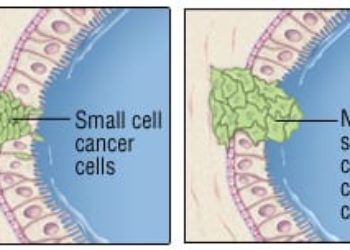Non-malignant extrapulmonary findings common in lung cancer screening program
1. In a retrospective review of over 17 000 patients in the National Lung Screening Trial (NLST), there was a high prevalence of potentially significant extra-pulmonary findings.
2. The incidence of extrapulmonary malignancy detected in NLST was low.
Evidence Rating Level: 3 (Average)
Study Rundown: The NLST was a large randomized controlled trial that demonstrated that low dose CT lung cancer screening may significantly reduce lung cancer mortality. However, there is concern over whether the associated costs outweigh the benefits of early detection. Among these costs include incidental extrapulmonary findings that may lead to an invasive and costly workup for a benign lesion. The purpose of this study was to examine the prevalence of clinically significant extrapulmonary findings on chest CT in the NLST.
The study retrospectively reviewed the outcomes of over 17 000 patients in the NLST for extrapulmonary findings. At the conclusion of the trial, there was a high prevalence of extrapulmonary findings, with almost 1 in 5 patients having potentially significant extrapulmonary findings. However, the prevalence of extrapulmonary malignancies detected on screening was only 0.4%. The results of this study demonstrate a high prevalence of incidental findings and low rates of malignancy in lung cancer screening and highlight the importance of communication about incidental findings from the radiologist and the need for standardized reporting of incidental findings. The study is strengthened by the large sample size compared to previous reports based on studies in Europe and Canada. However, the study is limited by the retrospective design as well as by the lack of standardized reporting methods for extrapulmonary findings.
Click to read the study in JACR
Relevant Reading: Reduced lung-cancer mortality with low-dose computed tomographic screening
In-Depth [retrospective cohort]: This was a retrospective analysis of 17 309 patients using prospective data from the NLST. The primary outcome was the prevalence of extrapulmonary findings, defined as the number of patients with greater than one findings outside the lung divided by the total number of patients screened. The secondary outcome was the extrapulmonary malignancy rate, determined from NLST outcomes data. The prevalence of extrapulmonary findings in specific organ systems was also calculated.
Among the 17 309 patients, extrapulmonary findings were reported in 10 166 patients (58.7%; 95% CI: 58.0-59.5%). Extrapulmonary findings were coded as potentially significant in 3,398 patients (19.6%; 95% CI: 19.0-20.2%). Cardiovascular findings were most common (15.2%), followed by hepatobiliary (6.1%), renal (4.5%), adrenal (2.4%), and thyroid (1.3%). Primary extrapulmonary cancers were diagnosed in 67 of 17,309 patients (0.39%; 95% CI: 0.3-0.5%). The ratio of malignancy to extrapulmonary CT findings was highest for the thyroid (1 in 14 findings), followed by the kidneys (1 in 37 findings).
Image: PD
©2017 2 Minute Medicine, Inc. All rights reserved. No works may be reproduced without expressed written consent from 2 Minute Medicine, Inc. Inquire about licensing here. No article should be construed as medical advice and is not intended as such by the authors or by 2 Minute Medicine, Inc.







